Root traits for water-scarce or nutrient-limited environments (Preface)
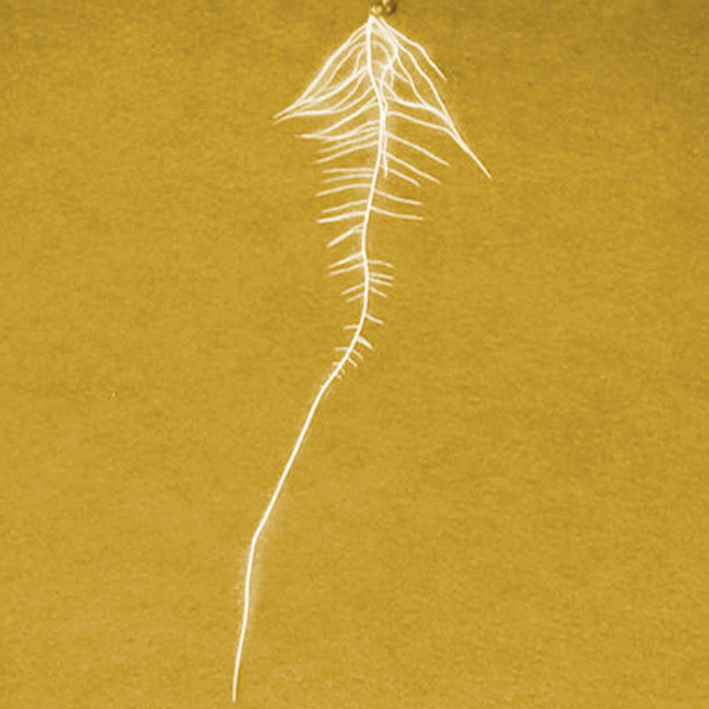
Annals of Botany 124: 883–890, 2019
doi: 10.1093/aob/mcz162
Crop production is often limited by lack of water or nutrients. White provides an overview to a Special Issue describing how roots might alleviate such constraints, observing that shoot and root architectures are inherited independently and can be improved simultaneously to increase the acquisition and utilisation of carbon, water and nutrients. Surveying the ways in which root traits improve resource acquisition, the papers presented in this Special Issue reveal how different traits are necessary, depending on whether water or a particular nutrient limits growth. The interactions between roots and microorganisms are discussed, stressing the need for plants to control the symbiotic relationships between mycorrhizal fungi and rhizobia in order to achieve maximal growth.
Author: Philip J. White
Bzh dwarf gene effects shoot and root growth in oilseed rape
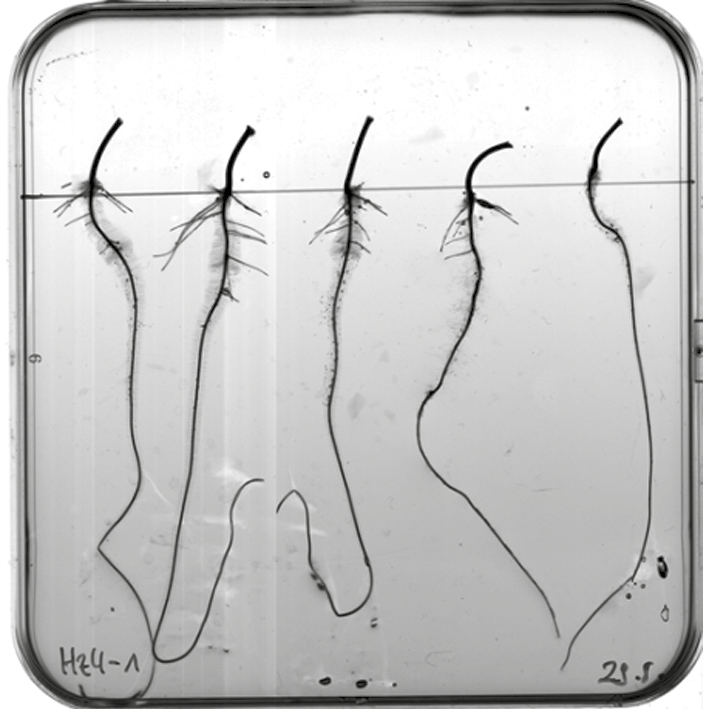
Annals of Botany 124: 891–901, 2019
doi: 10.1093/aob/mcy197
Previous studies have focused on the advantage of semi-dwarf oilseed rape (Brassica napus) hybrid varieties in terms of winter hardiness and nitrogen (N) efficiency linked to higher harvest index, leading to the question of whether the bzh dwarf locus affects root growth traits alongside stunted shoot development. Using root electrical capacitance in the field and in vitro growth trials, Schierholt et al. characterise isogenic hybrid pairs and found that bzh semi-dwarf hybrids showed a higher root: shoot ratio and a shorter total root length compared to normal types when grown in vitro and that semi dwarfs reduced root electrical capacitance in response to N limitation more than normal types.
Authors: Tina Tietz, Gerd Patrick Bienert, Andreas Gertz, Sebastian Miersch, Heiko Becker, and Antje Schierholt
TaARF4 regulate root growth and plant height in wheat
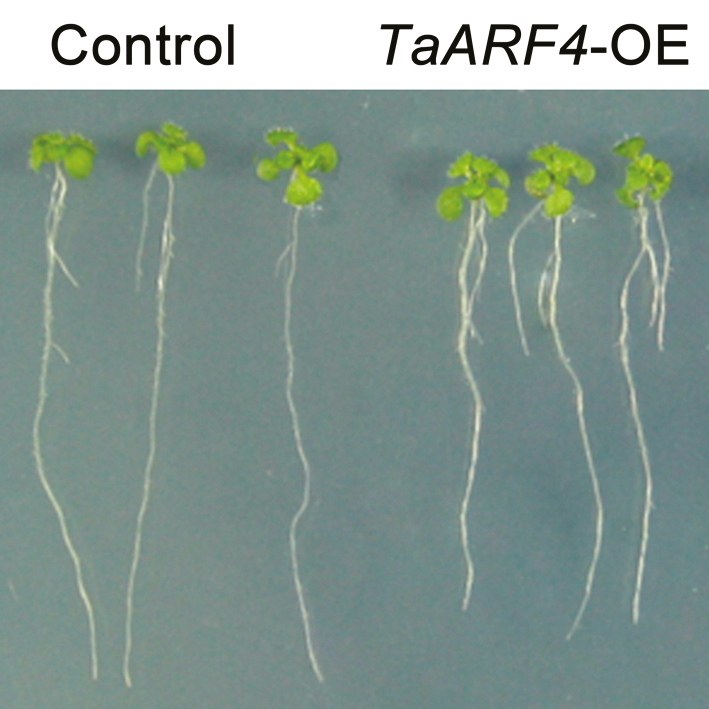
Annals of Botany 124: 903–915, 2019
doi: 10.1093/aob/mcy218
Wheat (Triticum aestivum) is a staple food crop worldwide, and its root and plant architecture strongly affect grain yield. Auxin response factors (ARF) have important roles in plant growth and development, but knowledge about the functions of wheat ARF members is limited. Wang et al. isolate an ARF family member, TaARF4. Ectopic expression and association analysis indicates that the TaARF4 protein may be involved in root length and plant height determination in wheat. Geographic distribution and allelic frequencies demonstrated TaARF4-B haplotypes were selected during Chinese wheat breeding. This work is helpful for selection of wheat genotypes with optimal root and plant architecture.
Authors: Jingyi Wang, Ruitong Wang, Xinguo Mao, Long Li, Xiaoping Chang, Xueyong Zhang, and Ruilian Jing
Intermittent drought adaptation of wild common-bean in Mesoamerica
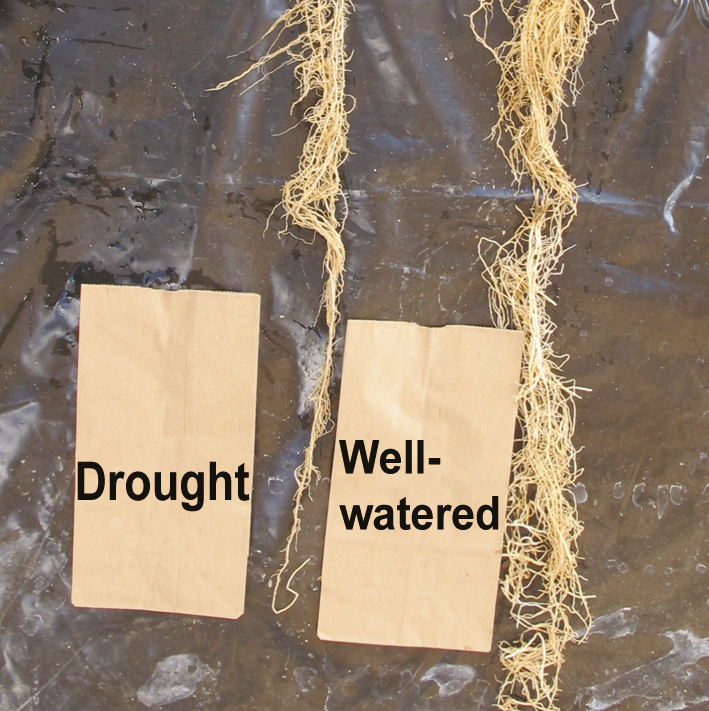
Annals of Botany 124: 917–932, 2019
doi: 10.1093/aob/mcy221
The production of common bean (Phaseolus vulgaris L., Fabaceae) is increasingly threatened by episodes of aridity. Berny et al. conducted a greenhouse experiment in which they subjected a large collection of wild common-bean from Mesoamerica to drought prior to flowering and measured root and shoot growth. Wild beans from the driest areas of Mexico produced more biomass and were deeper-rooted. Compared to domesticated types, they were less delayed in their growth. Specific genome regions were correlated with root depth, biomass and drought response. The importance of these wild beans from arid areas is being tested in field breeding programs with domesticated beans.
Authors: Jorge C. Berny-Mier y Teran, Enéas Konzen, Viviana Medina, Antonia Palkovic, Andrea Ariani, Siu M. Tsai, Matthew Gilbert, and Paul Gepts
Genetic analysis of tomato root colonisation by arbuscular mycorrhizal fungi
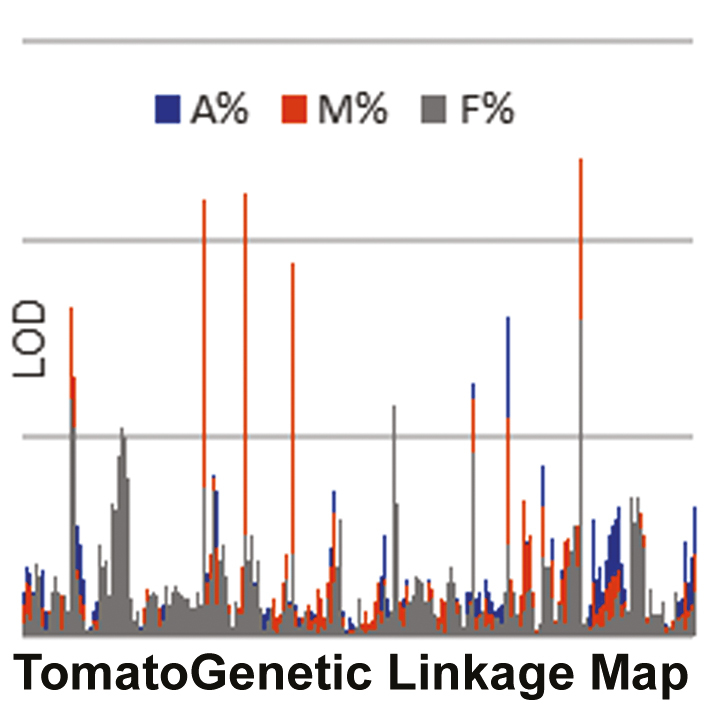
Annals of Botany 124: 933–946, 2019
doi: 10.1093/aob/mcy240
Arbuscular mycorrhizal fungi (AMF) are key organisms in agricultural systems frequently challenged by biotic and abiotic stresses; however, little is known about the genetics of the AMF-plant association. Plouznikoff et al. describe the genetics of tomato plant colonization by AMF taking advantage of the QTL analysis, the on-line omic tools, and the wild genetic diversity likely lost during tomato domestication. They found that intensity (M%), rather than frequency (F%) of AMF colonisation, constitutes the key morphological measure, and that the gene contents of AMF colonisation QTLs might be important for explaining the establishment and functioning of the AMF-plant symbiosis.
Authors: Katia Plouznikoff, Maria J. Asins, Hervé Dupré de Boulois, Emilio A. Carbonell, and Stéphane Declerck
How does IDD10 regulate ammonium-dependent rice root growth?
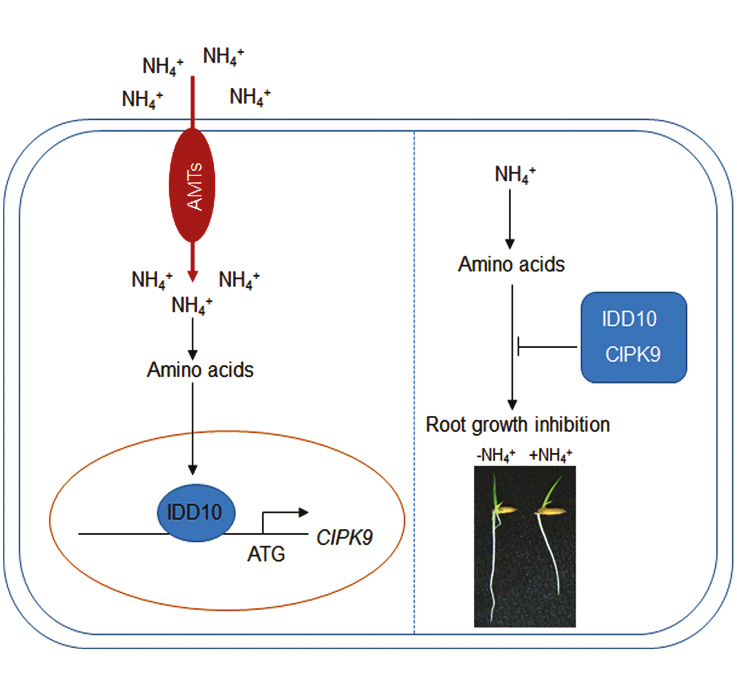
Annals of Botany 124: 947–960, 2019
doi: 10.1093/aob/mcy242
After acquisition from soil, ammonium ions are assimilated into amino acids, and inhibit root growth when their concentration is high. Xuan et al. report a mutation at indeterminate domain 10 (IDD10) in rice that resulted in less cellular ammonium content and ammonium-dependent short primary root growth; however, increased cellular ammonium level in idd10 did not rescue primary root length. Transcriptome analysis revealed that CBL-interacting protein kinase 9 (CIPK9) was one of the targets of IDD10. A cipk9 mutant exhibited ammonium-dependent short primary root growth, and overexpression of CIPK9 rescued ammonium-mediated short root of idd10, suggesting that ammonium might regulate calcium signaling to modulate root growth in idd10 mutants.
Authors: Yuan Hu Xuan, Vikranth Kumar, Xiao Han, Sung Hoon Kim, Jin Hee Jeong, Chul Min Kim, Yue Gao, and Chang-deok Han
Maize root hairs, drought and P
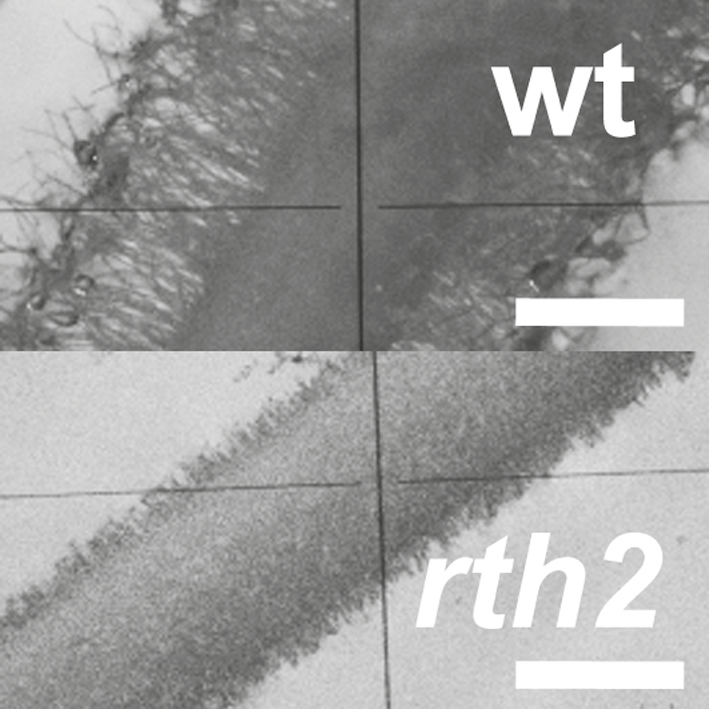
Annals of Botany 124: 961–968, 2019
doi: 10.1093/aob/mcz011
Root hairs are found in all plant species and are critical for water and phosphate uptake. In this investigation of the importance of root hairs for maize in low phosphate soil under drought conditions, Klamer et al. show that this combined stress decreases internal shoot P concentrations in the short root hair maize mutant, rth2, but the P status was not affected by the root hair loss. The capture of P from the soil, however, represented by the shoot P content, substantially profited from root hairs, especially under combined stress. Moreover, the performance of the root hair mutant was biased by altered root growth.
Authors: Florian Klamer, Florian Vogel, Xuelian Li, Hinrich Bremer, Günter Neumann, Benjamin Neuhäuser, Frank Hochholdinger, and Uwe Ludewig
Root auxins: your good investment in water-saving
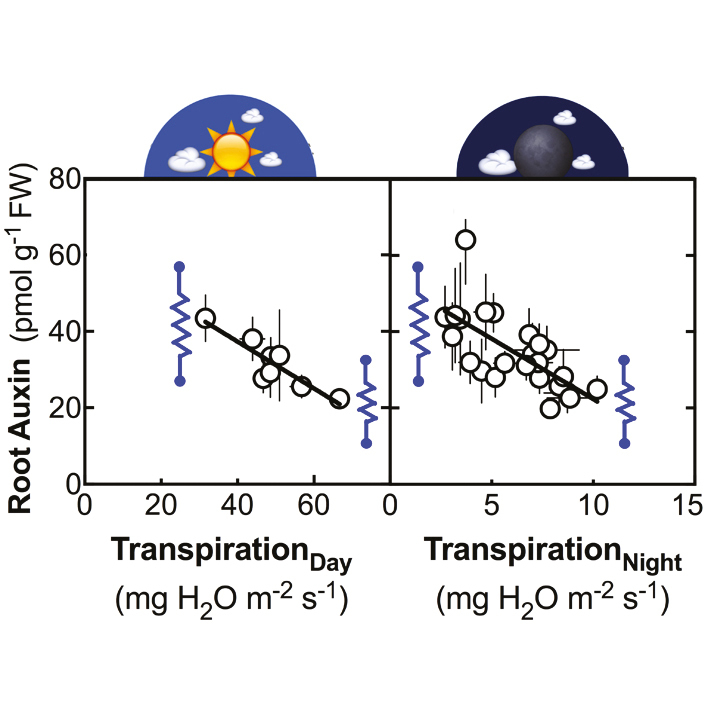
Annals of Botany 124: 969–978, 2019
doi: 10.1093/aob/mcz023
Drought tolerance in wheat has hitherto been associated with a water-saving strategy consisting of reducing daytime transpiration under times of the day with high evaporative demand together with? limiting wasteful nocturnal transpiration. In this paper, Sadok and Schoppach add new findings to a series of physiological, genetic and molecular investigations on a wheat mapping population that point to the involvement of root auxins in reducing plant hydraulic conductance along with daytime and nighttime transpiration rates. Collectively, the results indicate that root auxin accumulation triggers the water saving behaviour likely by reducing axial and radial water transport in the root, thereby enabling water-saving.
Authors: Walid Sadok and Rémy Schoppach
Hypernodulating soybean mutant nod4 has limited root-to-shoot water transport capacity
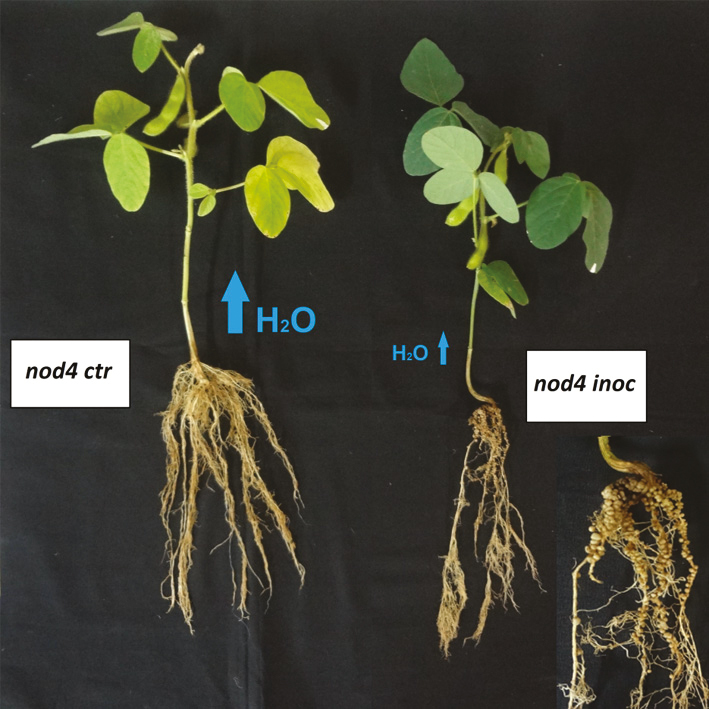
Annals of Botany 124: 979–991, 2019
doi: 10.1093/aob/mcz040
Although hypernodulating phenotype mutants of legumes, such as soybean, possess a high leaf N content, the large number of root nodules decreases carbohydrate availability for plant growth. Lopes et al. show that hypernodulating has decreased root capacity to supply leaf water demand as a consequence of their reduced root dry mass and root volume; this results in limited absolute root conductance and root conductivity normalized by leaf area. Thereby, reduced leaf water potential at midday contributed to depression of photosynthesis associated with both stomatal and non-stomatal limitations, resulting in decreased growth of hypernodulating phenotype mutants.
Authors: Emile Caroline Silva Lopes, Weverton Pereira Rodrigues, Katherine Ruas Fraga, José Altino Machado Filho, Jefferson Rangel da Silva, Mara Menezes de Assis Gomes, Fabio Afonso Mazzei Moura Assis Figueiredo, Peter M. Gresshoff, and Eliemar Campostrini
Genomic regions controlling root traits at late growth stages in wheat
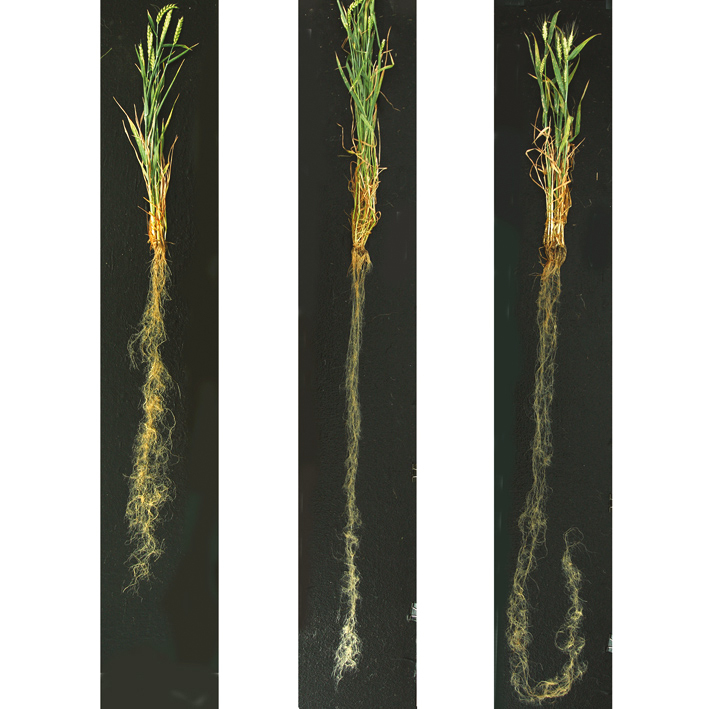
Annals of Botany 124: 993–1006, 2019
doi: 10.1093/aob/mcz041
The genetic basis of root traits and their relationship with shoot traits remain to be elucidated in wheat. Li et al. reveal that deep-rooted accessions had lower canopy temperature (CT) and higher grain yield per plant (YPP) than shallow-rooted ones. Three loci associated with root depth at both booting and mid-grain fill stages, as well as CT and YPP were detected by genome-wide association study. The YPP was significantly higher in genotypes which combined favorable marker alleles for root depth and plant height. These results will facilitate intensive study on root morphology and breeding through molecular design.
Authors: Long Li, Zhi Peng, Xinguo Mao, Jingyi Wang, Xiaoping Chang, Matthew Reynolds, and Ruilian Jing
Plant roots and rhizosphere microorganisms in clay neogenesis
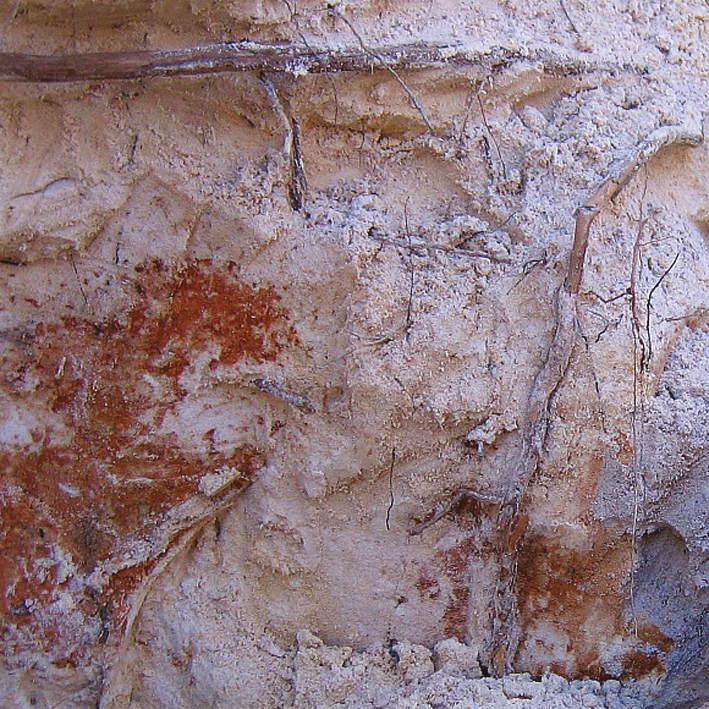
Annals of Botany 124: 1007–1018, 2019
doi: 10.1093/aob/mcz065
This paper by Reith et al. provides evidence that laying down of layers of clays in lateral root platforms of certain eucalypts (illustrated here for Eucalyptus incrassate, Myrtaceae) and banksias (Banksia sp. Proteaceae) involves a symbiotic collaboration between plant roots and identified rhizosphere microorganisms. In such systems, plants provide the morphological and physiological equipment for allocating key resources for synthesis of end products by the microbial elements, while rhizosphere microorganisms execute biomineralisation processes.
Authors: F. Reith, W. Verboom, J. Pate and D Chittleborough.
Waterlogging tolerance and responses to nutrient levels in the tropical grass Urochloa humidicola
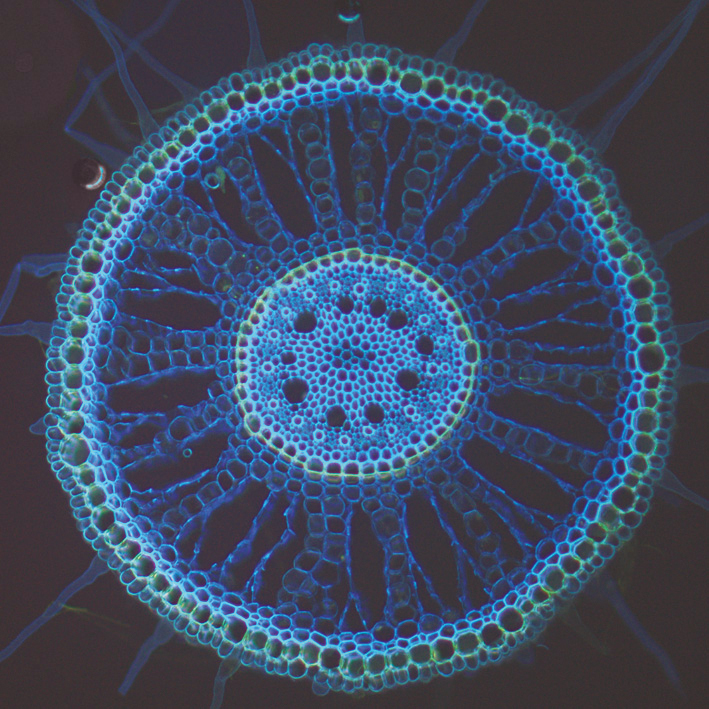
Annals of Botany 124: 1019–1032, 2019
doi: 10.1093/aob/mcz071
Extensive areas in the tropics are characterised by highly variable soil nutrient conditions and waterlogging events. Jiménez et al. evaluated shoot and root responses of the C4 perennial grass Urochloa humidicola (Panicaceae) under varying conditions of nutrients and lack of O2 in the root-zone. Shoot dry mass was reduced for plants in low-O2 compared with aerated conditions at high, but not at low nutrition. Slow growth in low-nutrient conditions limited any further response to the low-O2 treatment. Root traits of aerenchyma, a narrow stele and a tight barrier to impede radial O2 loss, together facilitate O2 movement to the tips of roots. This internal supply of O2 enables root growth and nutrient uptake.
Authors: Juan de la Cruz Jiménez, Lukasz Kotula, Erik J. Veneklaas and Timothy D. Colmer
Rhizosphere priming of isogenic wheat lines varying in citrate efflux

Annals of Botany 124: 1033–1042, 2019
doi: 10.1093/aob/mcz082
Root exudates (organic acid ligands) could liberate mineral-protected carbon (C) in soil for microbial degradation and thus contribute to rhizosphere priming effect (RPE). Xu et al. used a 13C natural abundance approach to examining the effect of P availability on soil organic C decomposition in two wheat (Triticum aestivum) near-isogenic lines varying in citrate efflux. They found higher RPE, and extractable soil P, Fe and Al under the citrate-exuding line. An independent dissolution experiment confirmed that citrate ligand could facilitate Fe and Al release from soil and possibly the release of mineral-protected C.
Authors: Qiao Xu, Xiaojuan Wang and Caixian Tang
Impact of sodic soils on wheat coleoptile length and root angle
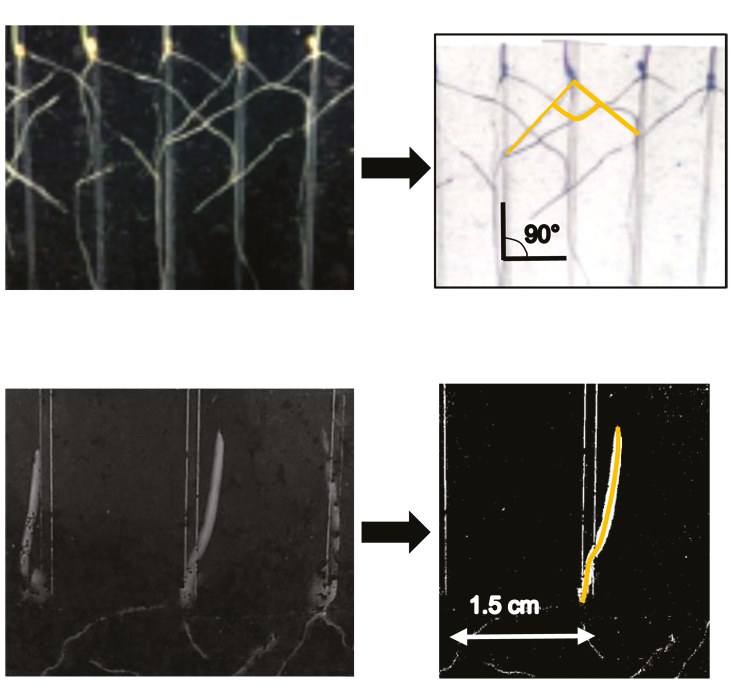
Annals of Botany 124: 1043–1052, 2019
doi: 10.1093/aob/mcz094
High exchangeable sodium percentage (ESP) of sodic soils can reduce seedling emergence. Anzooman et al. examined seedling coleoptile length and seminal root angle of wheat (Triticum aestivum) genotypes to determine whether these traits vary between genotypes and their tolerance to sodic soils. Seminal root angle and coleoptile length measurements were compared with seedling emergence rate and force measured previously. Significant variation in root angle between genotypes suggests that this may be a suitable characteristic to identify wheat tolerance to sodicity. Narrower seminal root angle was correlated with rate and force of seedling emergence, traits likely to improve establishment.
Authors: Monia Anzooman, Jack Christopher, Jullian Taylor, Yash P. Dang, Neal W. Menzies, and Peter M. Kopittke
Auxin homeostasis and signalling control adventitious rooting
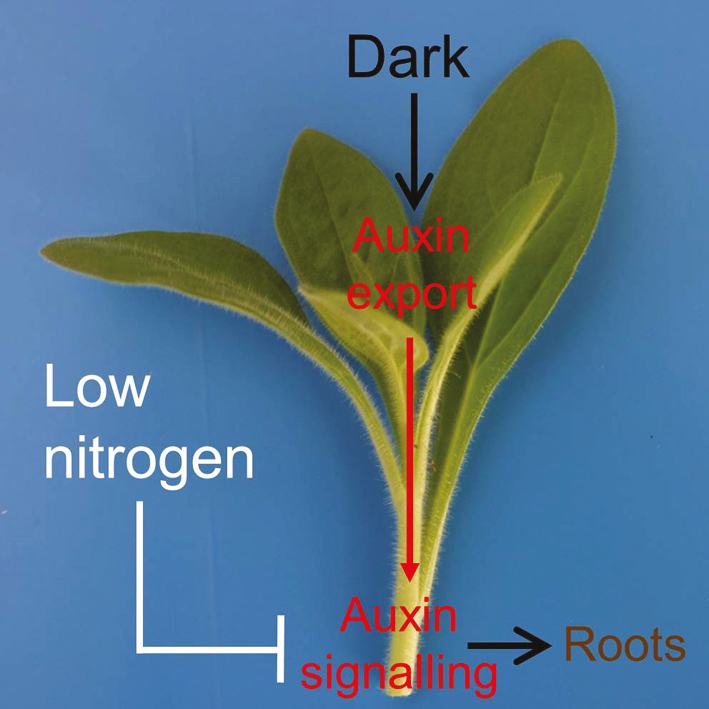
Annals of Botany 124: 1053–1066, 2019
doi: 10.1093/aob/mcz095
Petunia hybrida (Solanaceae) was used to analyse the involvement of auxin in inhibitory and promotive effects of low nitrogen nutrition of stock plants and dark storage of cuttings on adventitious rooting. Concentrations of indole-3-acetic acid, the auxin-related transcriptome and root phenotype were monitored in combination with manipulations of auxin source capacity, polar auxin transport and local auxin availability. Yang et al. showed that dark-stimulated rooting involves enhanced auxin accumulation and signalling in the stem base in the upper shoot, whereas limited nitrogen decreases the auxin response. Nitrogen- and dark-responding molecular components of the auxin signal cascade are highlighted.
Authors: H. Yang, Y. Klopotek, M.R. Hajirezaei, S. Zerche, P. Franken, and U. Druege
Cell wall hydrolases in sugarcane aerenchyma formation

Annals of Botany 124: 1067–1089, 2019
doi: 10.1093/aob/mcz099
Root cell walls of sugarcane (Saccharum officinarum, Poaceae) undertake modifications that lead to the formation of a composite associated with the permeability of gas spaces (aerenchyma). Grandis et al. describe associated gene expression, protein production and activities of glycosyl hydrolases associated with cell wall modifications. These phenomena are synchronised so that functional moduli are activated during aerenchyma development.
Authors: Adriana Grandis, Débora C. C. Leite, Eveline Q. P. Tavares, Bruna C. Arenque-Musa, Jonas W. Gaiarsa, Marina C. M. Martins, Amanda P. De Souza, Leonardo D. Gomez, Claudia Fabbri, Benedetta Mattei and Marcos S. Buckeridge
Aquaporins and apoplastic barriers in nutrient-limited barley
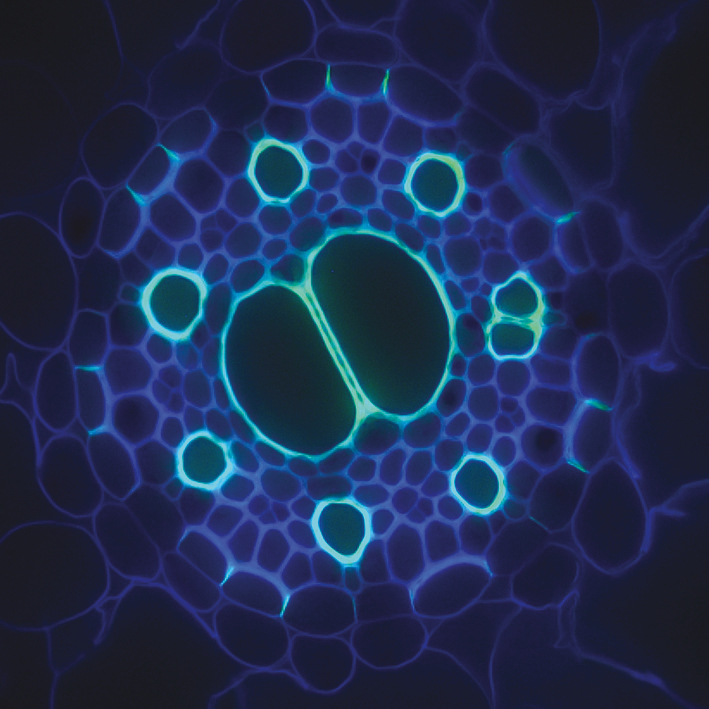
Annals of Botany 124: 1091–1107, 2019
doi: 10.1093/aob/mcz113
Mineral nutrient limitation causes an increase in the root-to-shoot surface area ratio. Resources are allocated to the root, the part of the plant that can absorb the limited nutrient. Armand et al. find that barley (Hordeum vulgare L.) plants grown with a limited supply of nitrogen and phosphorus show a root-zone specific decrease in the activity of aquaporins, the water channels located at the plasma membrane of cells. Chemical barriers to water flow, such as suberin lamellae, increase. These responses reduce the water transport property of roots and facilitate adjustment of root water uptake with shoot water loss. The hydraulic supports the growth response.
Authors: Thomas Armand, Michelle Cullen, Florentin Boiziot, Lingyu Li and Wieland Fricke
Transcriptional reprogramming of wheat roots during signal communication with arbuscular mycorrhizal fungi
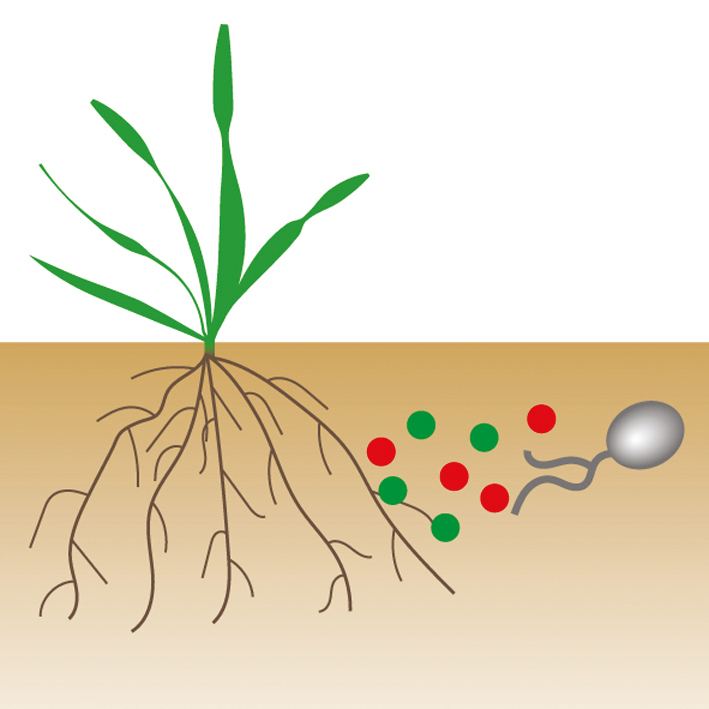
Annals of Botany 124: 1109–1119, 2019
doi: 10.1093/aob/mcz119
Arbuscular mycorrhizal (AM) symbiosis initiates with molecular signal communication (MSC) between AM fungi and the roots of the host plant. Tian et al. tested the hypothesis that the transcriptional profiles of wheat roots can be changed significantly by AM symbiotic signals. The expression of 1,888 and 472 genes was up- and down-regulated by MSC, respectively. More than 120 genes that may be involved in key processes during AM symbiosis development were regulated at the pre-physical contact stages. Information provided by the study is of great importance for understanding the mechanisms underlying the development of AM symbiosis.
Authors: Hui Tian, Runze Wang, Mengjiao Li, Hanyan Dang and Zakaria M. Solaiman
Cluster roots and plant interactions
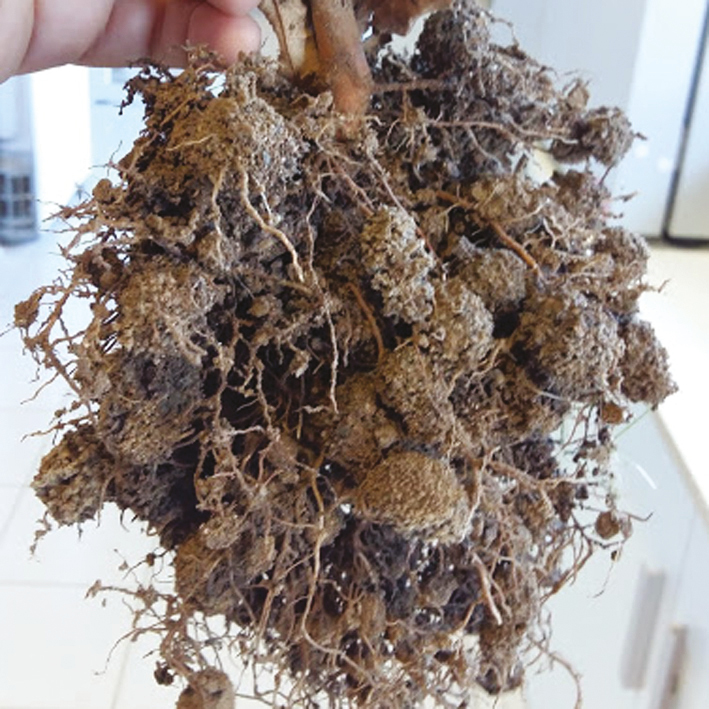
Annals of Botany 124: 1121–1131, 2019
doi: 10.1093/aob/mcz128
Proteaceae species are well known due to their noticeable flowers, but also for their cluster roots. Cluster roots (CRs) constitute a special root adaptation that enables plants to take up nutrients, particularly phosphorus, from soils with low nutrient availability, including recent volcanic deposits. CRs provided Proteaceae with a competitive advantage over non-cluster root (NCR) species at the seedling stage, which may have important consequences for species coexistence and community structuring. After three growing seasons, Fajardo and Piper found that NCR species always grew less when planted with a Proteaceae species, rejecting the hypothesis of facilitation.
Authors: Alex Fajardo and Frida I. Piper


